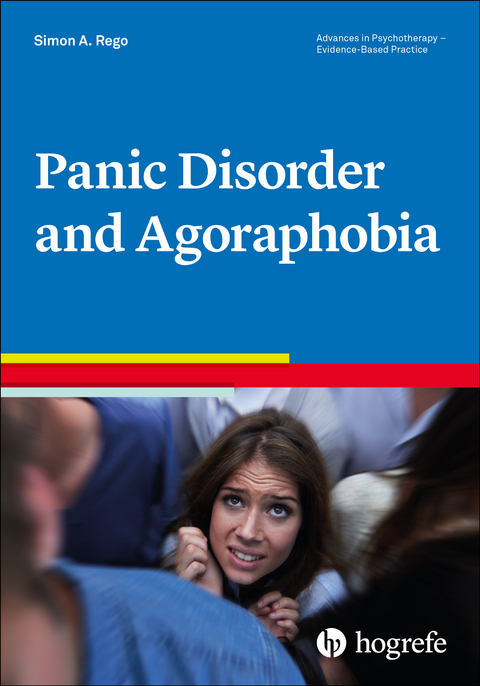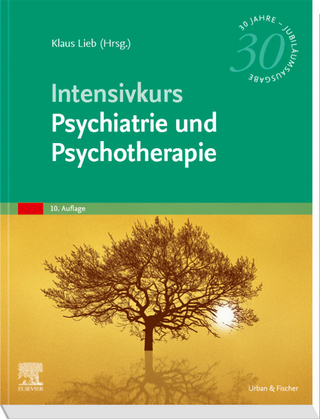
Panic Disorder and Agoraphobia
Hogrefe Publishing (Verlag)
978-0-88937-405-8 (ISBN)
- Noch nicht erschienen (ca. September 2025)
- Versandkostenfrei innerhalb Deutschlands
- Auch auf Rechnung
- Verfügbarkeit in der Filiale vor Ort prüfen
- Artikel merken
* Compact and current overview of science and practice
* Outline of a 12-session treatment
* Downloadable handouts for clinical practice
This new and indispensable volume in the Advances in Psychotherapy series has been meticulously crafted to address the nuances of diagnosing, assessing, and treating panic disorder and agoraphobia, using the latest interventions derived from cognitive behavioral therapy. Designed as a brief but comprehensive resource for treatment providers at all levels, this book gives a description of panic disorder and agoraphobia, reviews well-established, empirically derived theories and models, and guides readers through the diagnostic and treatment decision-making process before outlining a 12-session treatment.
Each chapter offers practical guidance, specialized insights, and adaptable strategies to tailor the treatment to individual patients. The step-by-step approach, a detailed case vignette, and downloadable worksheets will enable practitioners to feel confident and competent when empowering patents to overcome their often debilitating fears and reclaim their lives. This is an ideal resource for clinical psychologists, other mental health professionals, and students.
Simon A. Rego, PsyD, ABPP, A-CBT, is a licensed clinical psychologist with 25 years of experience in using Cognitive Behavior Therapy (CBT) for Panic Disorder, Agoraphobia, and other anxiety disorders. He is Chief of Psychology and Director of Psychology Training at Montefiore Medical Center and Professor of Psychiatry and Behavioral Sciences at Albert Einstein College of Medicine in New York. He is Board Certified in Cognitive Behavioral Psychology by the American Board of Professional Psychology, a Fellow of the Association for Behavioral and Cognitive Therapies and the Academy of Cognitive Therapy, and a Founding Clinical Fellow of the Anxiety and Depression Association of America. Dr. Rego is also a former member of the Board of Directors of both the Association for Behavioral and Cognitive Therapies and the Anxiety and Depression Association of America.
1 Description
1.1 Terminology
1.2 Definition
1.3 Epidemiology
1.4 Course and Prognosis
1.5 Differential Diagnosis
1.5.1 Other Specified Anxiety Disorders or
Unspecified Anxiety Disorder
1.5.2 Anxiety Disorder Due to Another Medical
Condition
1.5.3 Substance- or Medication-Induced Anxiety
Disorder
1.5.4 Other Mental Disorders With Panic Attacks
as an Associated Feature
1.5.5 Illness Anxiety Disorder
1.5.6 Specific Phobia, Situational Type
1.5.7 Separation Anxiety Disorder
1.5.8 Social Anxiety Disorder
1.5.9 Panic Disorder
1.5.10 Acute Stress Disorder and PTSD
1.5.11 Major Depressive Disorder
1.5.12 Other Medical Conditions
1.6 Comorbidities
1.7 Diagnostic Procedures and Documentation
1.7.1 Structured and Semi-Structured Diagnostic
Interviews
1.7.2 Routine Outcome Monitoring
2 Theories and Models
2.1 The Cognitive Model
2.2 The Behavioral Model
3 Diagnosis and Treatment Indications
3.1 Diagnostic Assessment
3.2 Treatment Indications
3.2.1 Empirically Supported Treatments for Panic
Disorder and Agoraphobia
3.3 Factors That Influence Treatment Decisions
3.3.1 Age
3.3.2 Gender
3.3.3 Race
3.3.4 Educational Level
3.3.5 Individual Preference
3.3.6 Social Support
3.3.7 Clinical Presentation and Comorbidity
3.3.8 Insight and Motivation
3.3.9 Patient's Treatment History
4 Treatment
4.1 The Diagnostic Assessment
4.2 Methods of Treatment
4.2.1 Presentation of the Principles of CBT and
General Model of CBT
4.2.2 Presentation of the CBT Models of Panic
4.2.3 Tailoring the Cognitive and Behavioral Models
of Panic to the Patient Through the Use
of a Functional Assessment
4.2.4 Assessing Panic-Related Stimuli
4.2.5 Internal Triggers: Somatic Sensations and
Cognitive Symptoms
4.2.6 External Triggers: Situations and Activities
4.2.7 Assessing Cognitive Features
4.2.8 Assessing Behavioral Features
4.2.9 Self-Monitoring
4.2.10 Psychoeducation
4.2.11 Normalizing Panic Attacks
4.2.12 The Role of Dysfunctional Interpretations
in Panic Disorder
4.2.13 The Role of Avoidance and Safety-Seeking
Behaviors in Maintaining Panic Disorder
4.2.14 Presenting the Rationale for CBT
4.2.15 Using Cognitive Therapy Techniques
4.2.16 What Is the Role of Cognitive Therapy in
CBT for Panic Disorder?
4.2.17 Using Cognitive Restructuring to Correct
Cognitive Errors and/or Distortions
4.2.18 A Note on Intolerance of Uncertainty
4.2.19 Common Cognitive Errors in Panic: Probability
Overestimation, Catastrophizing, and
Underestimating of Ability to Cope
4.2.20 Planning for Interoceptive and In Vivo
Exposure
4.2.21 Building the Fear Hierarchy for Interoceptive
Exposure
4.2.22 Carrying Out Interoceptive Exposure
Exercises
4.2.23 In Vivo Exposure
4.2.24 Implementing Exposure: Providing the
Rationale to the Patient
4.2.25 Conducting Exposure to the Most Distressing
Stimuli
4.2.26 The Power of Praise - and the Risks of
Reassurance
4.2.27 Humor: Helpful or Hurtful?
4.2.28 Exposure for the Therapist
4.2.29 Booster Sessions
4.3 Mechanisms of Action
4.4 Efficacy and Prognosis
4.5 Variations and Combinations of Methods
4.5.1 Variants of CBT Treatment Procedures
4.5.2 CBT and Medications
4.6 Problems in Carrying out the Treatment
4.6.1 Organization of Suitable Treatment Settings
or Preconditions
4.6.2 Negative Reactions to Psychological Interventions
and the CBT Model
4.6.3 Resistance and Other Issues With Patient
Motivation and Commitment
4.6.4 Therapist's Discomfort When Conducting
Exposure Exercises
4.6.5 Therapist's Need to Provide Certainty
4.6.6 Problems in the Patient-Therapist Working
Alliance
4.6.7 Cognitive Therapy Techniques and Somatic
Skills That Become Safety Behaviors
4.6.8 Unbearable Anxiety Levels During Exposure
4.6.9 Absence of Anxiety During Exposure
4.7 Diversity Issues
5 Case Vignettes
6 Further Reading
7 References
8 Appendix: Tools and Resources
| Erscheint lt. Verlag | 30.9.2025 |
|---|---|
| Reihe/Serie | Advances in Psychotherapy - Evidence-Based Practice ; vol. 44 |
| Verlagsort | Toronto |
| Sprache | englisch |
| Maße | 178 x 254 mm |
| Themenwelt | Geisteswissenschaften ► Psychologie ► Persönlichkeitsstörungen |
| Medizin / Pharmazie ► Medizinische Fachgebiete ► Psychiatrie / Psychotherapie | |
| ISBN-10 | 0-88937-405-8 / 0889374058 |
| ISBN-13 | 978-0-88937-405-8 / 9780889374058 |
| Zustand | Neuware |
| Haben Sie eine Frage zum Produkt? |
aus dem Bereich


